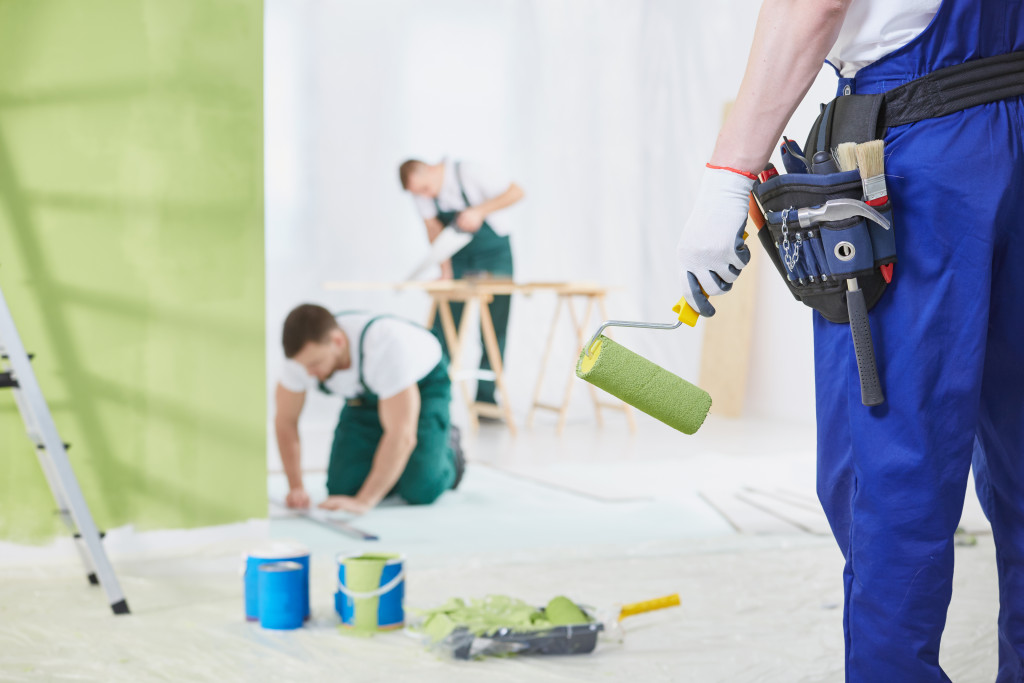- Crafting a detailed restoration plan is essential for effective ancestral house restoration.
- Structural repairs, including roofing and foundation, are crucial for a successful renovation.
- Preserving historical elements maintains the authenticity and historical value of the ancestral home.
- Balancing modern amenities with traditional charm can create a harmonious living space.
- Hiring professionals experienced in historical restoration ensures a high-quality, authentic restoration.
Many often cherish an ancestral home, yet maintaining such a property can be challenging. For many, having an ancestral home symbolizes their heritage, family roots, and lineage. However, time takes its toll, and often these properties decay, requiring urgent restoration to preserve their historical value and keep them habitable.
Indeed, the process of renovation can breathe new life into these old structures, transforming them into a blend of antiquity and modern comfort. It can be fulfilling, allowing homeowners to maintain the historical essence while adapting to contemporary living standards.
This blog post explores the essential steps for returning your old, deteriorated ancestral house to life. This will guide you through crafting a restoration plan, defining your vision and goals, prioritizing renovation areas, budgeting for costs, and securing expert restoration expertise.
Crafting a Restoration Plan
With a clear understanding of what it takes, here’s how to craft an effective restoration plan for successful ancestral house restoration:
Defining Your Restoration Goals and Vision
Every renovation project is unique. It’s essential to define your goals, aspirations, and vision. Ensure your restoration objectives align with your personal or family values and the property’s historical context. Defining your restoration goals and vision helps keep the project focused and ensures harmony in the renovated property.
Prioritizing Areas for Renovation
To streamline the restoration process, it is crucial to identify and prioritize renovation areas. Focus on urgent repairs before cosmetic enhancements, minimizing financial costs and addressing critical elements first.
Budgeting for Materials, Labor, and Unforeseen Costs
Consider your budget alongside your restoration plan. Define the scope of work, identify material and labor requirements, and create a realistic budget. Account for unforeseen costs during the restoration process. Ensure flexibility in your budget for last-minute changes or unexpected issues.

Essential Steps in the Renovation Journey
Now that you have a well-defined plan, it’s time to roll up your sleeves and dive into the renovation journey. Here’s how you can execute your plan and unveil the renewed charm of your ancestral house:
Structural Repairs and Foundation Stabilization
One of the critical aspects of renovating is assessing and repairing any foundation issues. Begin by inspecting the foundation for visible cracks or damages. Ensuring its stability is vital for a smooth restoration process and a structurally sound house.
Replacing the Roofing
A damaged roof can lead to water leaks and damage, causing substantial havoc inside the property. To ensure a proper and safe roofing installation, consider engaging professional residential roof replacement services specializing in historic properties, as they will be familiar with the intricate details and unique challenges such a project may present. A well-installed, high-quality roof will protect the home from weather damage and improve its aesthetic appeal.
Preserving Historical Elements
An ancestral home’s historical elements offer valuable insight into its heritage and unique features. These elements are crucial for maintaining the house’s authenticity and historical value. Consider refurbishing antique door frames, windows, and hardware instead of replacing them with modern equivalents.
Combining Tradition and Modernity
Careful planning and selective modernization are crucial for balancing old-world charm with present conveniences. Here’s how to introduce modern elements while preserving the historical integrity of your renovated ancestral home:
Designing Functional Spaces that Respect Heritage
You can blend modern amenities with the house’s traditional style. Plan the restoration with functional spaces in mind, ensuring they are modern, practical, and meet contemporary living needs. Preserve traditional design elements, adapting them to integrate contemporary technology for a harmonious blend of old and new.
Infusing Modern Amenities while Retaining Charm
Upgrading kitchens, bathrooms, and entertainment spaces is crucial for an old house’s livability. Maintain its charm by selecting designs that complement historical elements. Use durable, cost-effective, and high-quality materials.
Fostering Sustainability Through Thoughtful Design
Adopting sustainability practices is vital to preserve an ancestral home’s heritage and protect the environment. Use energy-efficient materials and appliances, incorporating sustainable features like solar panels, rain barrels, and composting toilets. These practices can lower costs and improve the property’s environmental impact.
Securing Expertise in Historical Restoration
Though tempting, hiring experienced professionals to restore your ancestral home is crucial. Look for experts in historical restoration with excellent references. Conduct a background check to avoid scams or unprofessional contractors.

Restoring an ancestral home is rewarding yet challenging. It involves careful planning, meticulous execution, and balancing preservation with modernization. Honor your roots while ensuring these homes are fit for modern living.
Key steps include creating a restoration plan, budgeting, making repairs, preserving historical elements, and infusing modernity while retaining charm. This ensures your home reflects your heritage, providing comfort and modern convenience—a renewed link to your past and a beautiful legacy for future generations.
